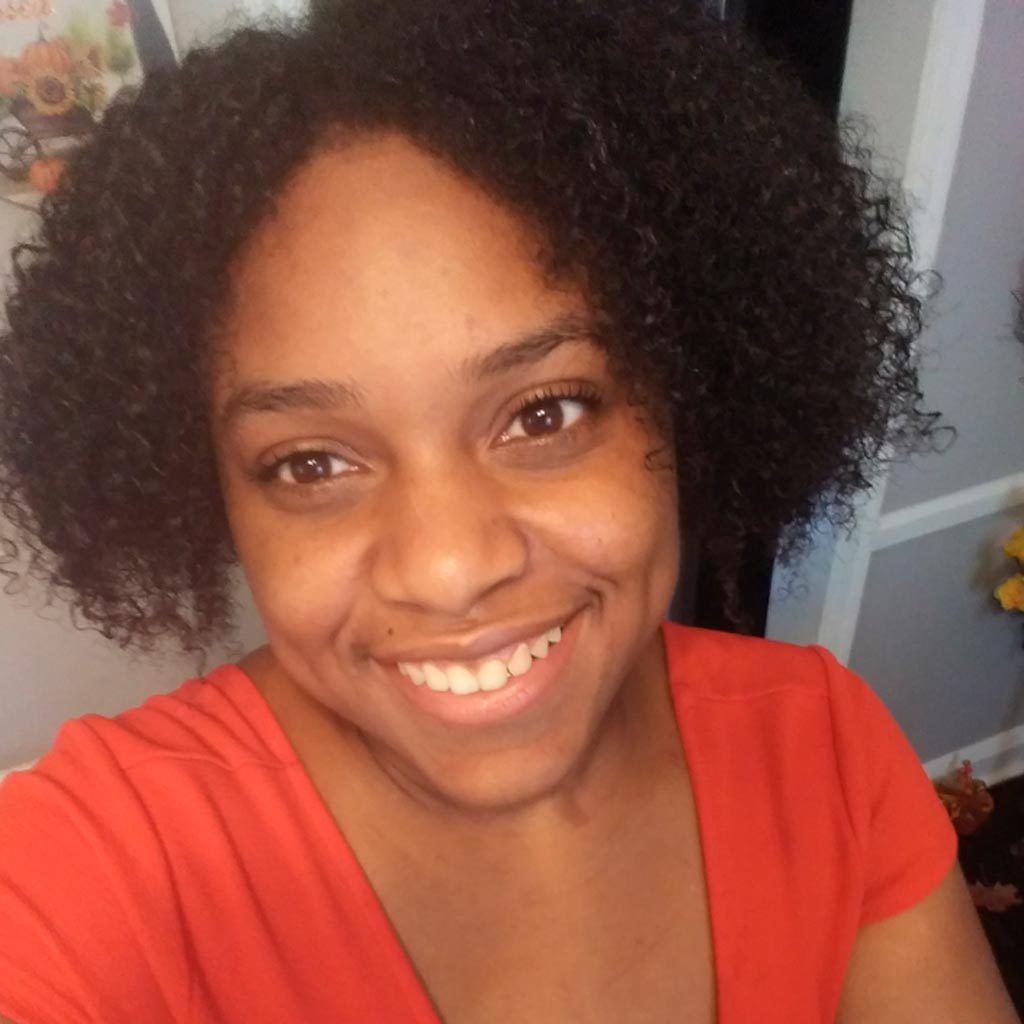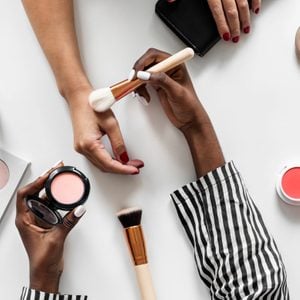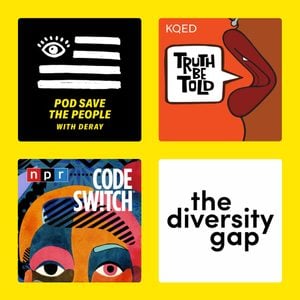Why I Refuse to Straighten My Natural Black Hair
Updated: Nov. 28, 2022

I've never chemically straightened my hair. Here's why.
“When are you going to get your hair done? You would be cute if you did something with it.” I heard the statement before I saw the man staring at me, as I was walking down the street. This stranger continued the one-sided conversation by criticizing my hair and telling me how I need to improve my look.
Yet contrary to what this random man believed, I had spent the morning “fixing” my hair. I had applied a moisturizing cream and spent time drying my curls before starting my day. My hair was in its natural state—puffy, curly, and thick—but to this man, it didn’t seem “done.”
Comments like these, even from someone I don’t know, can make me feel insecure and can make me question if I would look more appealing with my hair straight. He wasn’t the first person to tell me I needed to get my hair done and sadly, he most certainly won’t be the last.
This insecurity also comes because, in general, for Black women, having hair that appears long, straight, and silky is often seen as a rite of passage. To many, it symbolizes beauty, maturity, and professionalism to the outside world.
Yet, my hair has never been chemically straightened in my entire life. It’s something I am proud of because resisting the pressure to change it was incredibly hard to do. I often get asked when I went natural, but the truth is, I’ve never had to go through the process of transitioning my hair to its original texture. I was natural before Black hair stores had rows of products and before the media started to accept unprocessed hair as “cool.” My decision was made because, even from a young age, I liked the natural state of my hair. Plus, the thought of permanently changing a part of myself was scary. I paid a price for this decision as a kid and in my teens; overall, I’ve been mocked, ridiculed, and insulted because my hair stayed in its natural state.
This isn’t to say that I have never worn straight hairstyles, wigs, or extensions, but those are all temporary. My hair is ear-length, curly, puffy, and wavy.
Recently, I decided to go back to embracing my fully natural hair after I realized I can’t let who I am become altered by other people’s standards of beauty. Although sometimes it rings in my head that I look “better” with a straighter hairstyle, I know it’s not an idea that came from me. The concept that I’m more attractive with straight, long hair is rooted in a deep history of hair discrimination, constantly pushing the idea that Black hair in its natural state is unacceptable.
Slaves weren’t allowed to wear their hair uncovered in public
During the time of slavery, there were laws preventing slaves from leaving their hair uncovered. Both men and women were forced to wear scarves or handkerchiefs around their heads. This was done both for the functional reason of protecting hair from lice and perspiration and also to indicate social status in society. Head coverings were seen as a sign of submission and poverty to slave masters. It helped to separate Mulatto women from being mistaken for White. The original degrading reasons for headwraps were challenged once they were repurposed for fashion in the late 1700s by Creole women who added feathers and colors to make the covering more appealing. Today, head wraps are still worn as a fashion statement.
Black people were mocked for their hair texture
The texture of Black hair through the colonial and slavery period was called “woolly,” and “unruly,” and considered to be unappealing overall. The term “good hair” was coined during early antebellum America to describe Black women who had soft and long textured hair; this created a cultural stigma that continued into the 1900s. By 1910, Madam CJ Walker created “the press and curl” a revolutionary way to straighten kinky hair. Garrett Morgan developed the first chemical relaxer and sold the cream with great success. These inventions paved the way for Black people to become more accepted into American society by adapting to Eurocentric standards of beauty.
The Afro
During the Black Power movement of the 1960s, Black people protested segregation and oppression and challenged the social climate of the time by wearing their hair in its natural tightly coiled state in a popular style called Afro. This style reached its peak of popularity in the 1970s. The Afro was seen not only as a symbol of rebellion against the normalized beauty standards but also as a way to embrace Black identity with freedom and pride.
The rise of straight hair
By the 1980s and the 1990s, the most popular style for Black women was straight hair. The culture of the time influenced women to alter their hair texture by perming and pressing hair. There were a few variations of styles from the previous time such as box braids, cornrows, micro-minis, and long braids but these hairstyles were considered unprofessional by the mainstream public. In the fight for equality, there was a legal push for natural hair to be accepted. In one example, a Black woman who worked for American Airlines took her employer to court in 1981 because the company insisted she remove her braids. The court sided with the airline, arguing that braids weren’t necessarily an immutable racial element. Less than a decade later, The Hyatt Regency forced an employee to resign because she refused to take out cornrows that she wore for work. There was still a legal and social fight for Black hairstyles to be accepted.
A return to natural
In the 2000s and the 2010s, a second wave of a natural hair movement was embraced. Movies including Good Hair by Chris Rock led many Black women to abandon perms and embrace their natural hair. There was a rise of natural hair expos, festivals, and organic hair products that promoted the health of textured hair and natural hairstyles alike. In 2019, California state Senator Holly Mitchell, who wears dreadlocks, introduced legislation to protect against discrimination of textured hairstyles in workplaces and public schools. The CROWN act has already been passed in seven states and introduced in another 23 states.
While progress has been made in natural hair acceptance around the world, there is still further to go. The hope is that one day the world will accept textured hair as professional, beautiful, and desirable. It took over 100 years for Black hair to be accepted in public spaces and in 2020 it’s still lawful for some businesses, organizations, and schools to take disciplinary action against people for wearing natural hairstyles. In other words, there are still situations where people don’t get to choose to wear their hair in the way it grows from their heads. The choice to straighten or not straighten hair should be up to the individual, not enforced because of standards rooted in history.
As for me, I’ve reached a point in my hair journey where I realize that I feel more like “me” when it’s not covered or altered. I’ve grown to learn that beauty comes from so many forms. And my hair is unique. I may not always get compliments for it, but it feels beautiful to me to look in the mirror and see my hair the way nature intended for it to grow.
Next, read on to find out why one woman believes you should stop saying, “I don’t see color.”
For more on this important issue, see our guide to the Fight Against Racism.
Editor’s note: The opinions here belong to the author. To submit your own idea for an essay, email [email protected].
Sources:
- Naturallycurly.com: “The History of Headwraps: Then, There, and Now”
- The Atlantic: “When ‘Good Hair’ Hurts”
- Thecrownact.com


